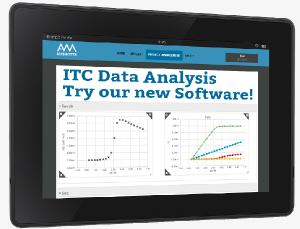A few days ago AFFINImeter launched an Isothermal Titration Calorimetry (ITC) data analysis contest. At this point no one has been able to finish the challenge, eventhough there is a considerable amount of participants. Since the main goal of the contest is to give all our AFFINImeter users an educational tool to get experience in the process of ITC data analysis.
Therefore, we would not be satisfied if some of you ran out of time. For this, we have decided to extend the contest deadline to January 31st
Join the Challenge
We encourage all people interested in molecular binding analysis, not only based on ITC data but also on any other experimentaltechnique, to participate in this challenge. If you are an expert in the analysis of thermodynamic data this is a nice opportunity for you!
Find the best combination of model & parameters for the target data and win a Kindle Fire HD 7 just sending us your results.

If you are a beginner in the analysis of ITC or, in general, of binding experiments, this challenge is also perfect for you since it will give you the opportunity to learn how to analyse actual ITC measurements. Our scientific team has selected some really interesting experiments and prepared some instructions that will guide you in the analysis process.
Learn the difference between stoichiometric and site equilibrium constants
By trying to solve this contest you will learn the difference between stoichiometric and site equilibrium constants, you will see how to easily perform a global analysis of several isotherms, and even how to find the, eventually unknown, concentration of active protein in a given experiment. Sign up HERE and you will get free access to AFFINImeter. Please, do not hesitate to encourage your labmates to join us. People from the whole world are already participating!
